
Soil Associations
0341 ICKNIELD
Soil and site characteristics
Shallow, mostly humose, well drained calcareous soils over chalk on steep slopes and hill tops. Deeper flinty calcareous silty soils in small coombes and valleys.
Geology
Chalk
Cropping and Land Use
Permanent grassland downland habitats and deciduous woodland on steep scarps; recreation; cereals and short term grassland on plateaux; military use.
Component soil series
| Subgroup | Series name | Percentage | WRB 2006 link |
|---|---|---|---|
| 3.41 | ICKNIELD | 65% | Rendzic Leptosols |
| 3.43 | ANDOVER | 10% | Calcaric Leptosols |
| 3.42 | UPTON | 10% | Rendzic Leptosols |
| 5.14 | MILLINGTON | 5% | Colluvic Calcaric Cambisols |
| 5.11 | COOMBE | 5% | Calcaric Cambisols |
Covers 388 km2 in England and Wales
Soilscapes Classification
| 3 |
Shallow lime-rich soils over chalk or limestone |
0341 ICKNIELD
Detailed Description
The Icknield association consists of shallow, stony, mostly humose silty soils on chalk. In Wiltshire and Dorset it is widespread on higher ground and on the steep slopes of scarps and valleys, but it is less extensive in South East England and in the Wolds of Humberside. The principal soil, the Icknield series, is a humic rendzina, consisting simply of a thin silty clay loam rich in organic matter overlying chalk. Proportions of other soils depend on past land use and the contribution made by drift deposits. Andover series is a brown rendzina, present under cultivation where there is thin silty drift, and grey rendzinas of the Upton series are on land with little drift. Upton series is the main associate on valley sides. Millington, Gore, Coombe and Panholes soils are found in colluvium or drift, on footslopes and in valleys. Porton and Garston soils are the main inclusions on hill tops in remnants of Plateau Drift.
The association is found under the remaining semi-natural downland or in relatively recent arable land. It is most extensive from west Dorset northwards to Salisbury Plain and the Marlborough Downs. Most of the soils contain flints and chalk stones from the underlying chalk though the non-calcareous fine earth is mainly drift-derived from aeolian silty drift. On the military training areas of Salisbury Plain and adjacent Downs Icknield soils are extensive on gently undulating land. Here and on adjoining arable land the association includes a mosaic of Andover soils, with occasional Upton soils on convex slopes. Millington, Coombe and Panholes soils are in thin colluvium and drift in dry valleys, and Carstens, Porton and Garston soils on narrow ridge tops. In west Dorset, parts of the scarp are covered by Andover soils in thin flinty drift and there are occasional Batcombe and Hornbeam soils in Plateau Drift on narrow ridges and spurs.
The Icknield association is confined to steep parts of the north- and west-facing chalk escarpments and to the dry valleys of the Wolds around Millington. The underlying chalk is relatively hard, so locally the steeper valley sides are only thinly covered by weakly calcareous soil. Some soils contain Devensian aeolian sandy material. Millington and Coombe soils occur in valley bottoms, sometimes in association with gley soils around springs. Upton soils are found on regularly cultivated, less steep land.
In South East England, the association is confined to the narrow ridge above Freshwater Bay on the west side of the Isle of Wight, Porton Down on the Wiltshire-Hampshire border, and to narrow tracts in the west of Berkshire. Upton are the main associate soils on eroded slopes and Coombe, Gore and Millington soils occur in dry valley bottoms. Because of their large organic matter content Icknield soils are often known as black puff.
Soil Water Regime
The soils are naturally well drained (Wetness Class I) and rainwater passes easily through the soil and chalk below. Plant available water is reduced by flints in the soil but chalk fragments and the shattered chalk layer immediately below the soil contribute additional moisture. In Wiltshire and Dorset profile available water for cereals is generally greater than summer moisture deficit but grass growth is somewhat restricted due to the larger need for water. Early spring drought can lower the final yields of all crops unless it is made good by rains in early summer.
They are difficult to consolidate to a firm seed bed and plants are often damaged by frost-heave. Though the soil is easy to work, flints cause excessive wear to tyres and implements and introduce problems when harvesting root crops and precision drilling. The organic matter content is often 15 to 20 per cent and sometimes leads to copper deficiency in cereals. Experiments have shown that barley crops grown on Icknield soils respond less well to nitrogen and use it less efficiently than other chalk soils. Crops suffer from exposure on some hilltops. The soils are moderately to slightly droughty for grass. Grazing cattle require magnesium supplement to prevent deficiency symptoms caused by the low availablility of this element. On most of this land poaching and rutting are only minor limitations to winter grazing but on steep slopes, over 11 degrees, damage arises from hoofs cutting through the turf and progressively exposing bare soil. This is particularly true on mixed farms where much relatively level downland is ploughed and stock tends to be concentrated on the steepland. On mainly arable farms the steepland is frequently under-grazed and becomes colonized by scrub.
Cropping and Land Use
The shallow, calcareous soils preclude most coniferous species, but beech (Fagus sylvatica) grows well and is the only major species. In Dorset single stands of Western red cedar (Thuja plicata) and Lawson cypress (Chamaecyparis Lawsoniana) show exceptional growth, though this could be in part related to included soils on patches of drift. Remnants of semi-natural grassland are widespread in Wiltshire. The soils under these old swards are rich in organic matter, and have a high pH and large calcium carbonate content, though where very flinty the soils are sometimes only weakly calcareous. Surface litter accumulates as a thin, well-aerated mat below which the humus is incorporated mostly by earthworms. On very dry sites earthworms may be few and other invertebrates, including ants, insect larvae, mites, woodlice and millipedes, produce a humus rich in droppings and plant remains.
In south west Wiltshire at Wylye Down, Steeple Langford Cow Down, Knighton, Knapp and Parsonage Downs, Hambledon Hill and Long Knoll, steep valley sides and hill tops have an extremely rich flora. The dominant or co-dominant species is Carex humilis. Long Knoll also includes some Sieglingia decumbens grassland. In north Wiltshire, on scarps overlooking the Pewsey Vale and on Marlborough Downs the swards have been lightly grazed and the grasslands are characteristized by Brachypodium pinatum or Zerna erecta. On Salisbury Plain the Imber, Larkhill, Tidworth and Porton training areas include a mosaic of herb-poor grassland mixed with land in various stages of reversion from arable land. Where the land is not grazed the vegetation is rank and dominated by Arrhenatherum elatius, and it is often invaded by small shrubs, but species such as Festuca ovina, F. rubra, Helictrotrichon pubescens and Zerna erecta are also dominant locally. Patches of floristically rich Carex humilis grassland are confined to sites between Larkhill and Tilshead. On Porton Down a species-rich Festuca ovina-Leontondon hispidus grassland is maintained under light grazing by rabbits and hares, but lichen-rich grassland, chalk heath and juniper scrub are also present.
Remnants of semi-natural grassland are to be found on these soils in the chalkland of South East England mainly restricted to land grazed for many years by sheep and rabbits. The soils are characterized by large topsoil organic matter contents. Litter accumulates as a thin well aerated mat and on very dry sites where there are few earthworms, other invertebrates, including ants, insect larvae, mites, woodlice and millipedes produce a humus rich in droppings and plant remains. In Hampshire and on the Isle of Wight, several downland sites are of scientific interest. Tidpit and Porton Down in Hampshire have characteristic grassland flora, and on Tidpit Down there is also mixed scrub and yew and oak woodland. East Woodhay Down near Highclere has similar grassland with red fescue (Festuca rubra), Yorkshire fog (Holcus lanatus) and cock's-foot (Dactylus glomerata). On the Isle of Wight the Chalk ridge extending east from the Needles and including West High, Tennyson and Compton Downs support scrub, grassland and chalk heathland with a flora strongly influenced by the maritime climate. Species present include kidney-vetch (Anthyllis vulneraria), horse-shoe vetch (Hippocrepis comosa), early purple orchid (Orchis mascula) and green-winged orchid (Orchis morio).
0341 ICKNIELD
Distribution Map
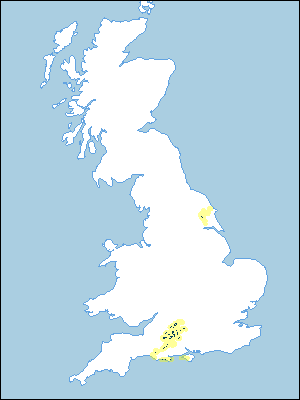 |
Note that the yellow shading represents a buffer to highlight the location of very small areas of the association.
Keys to component soil series
South Eastern Region
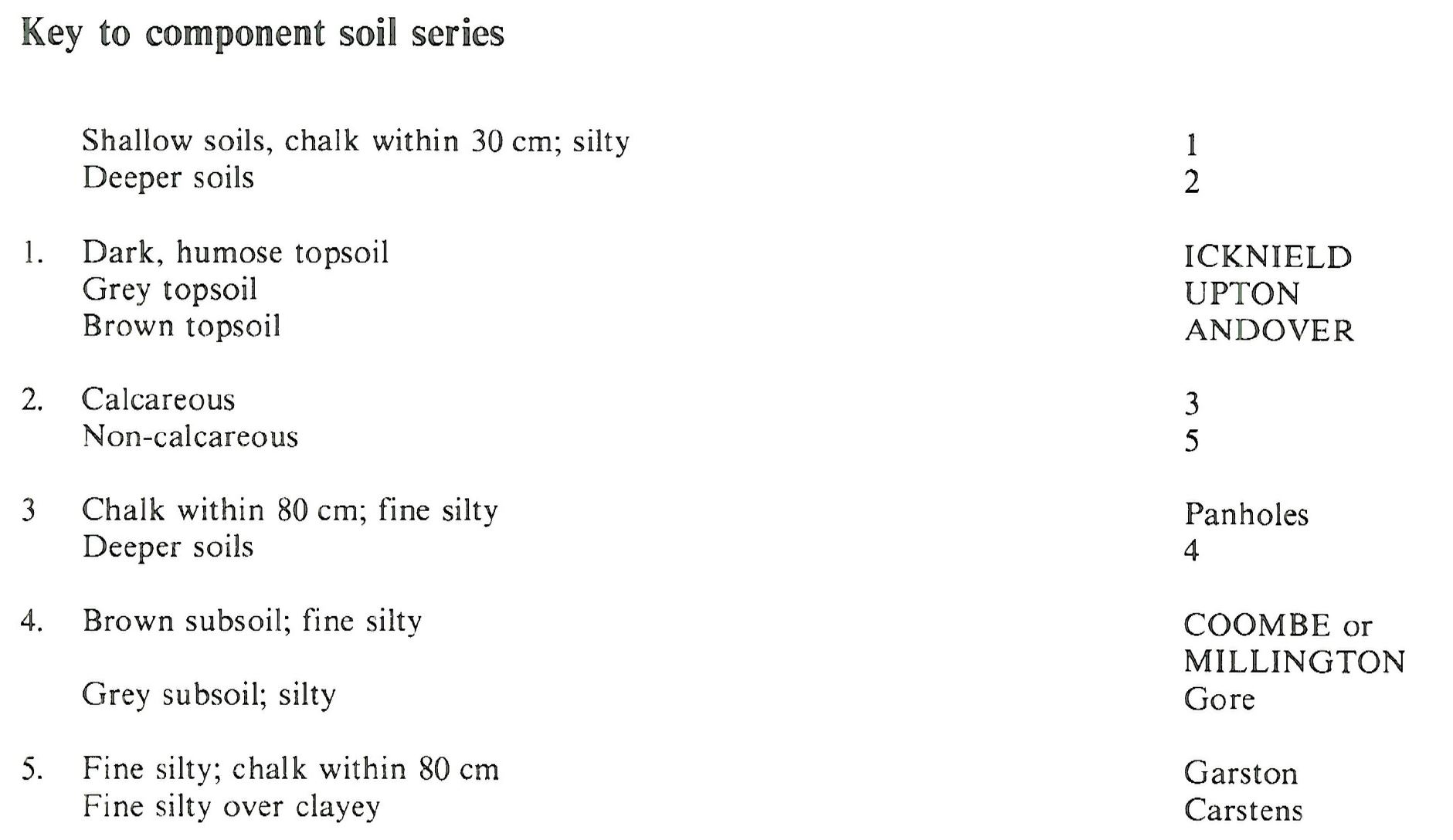 |
South Western Region
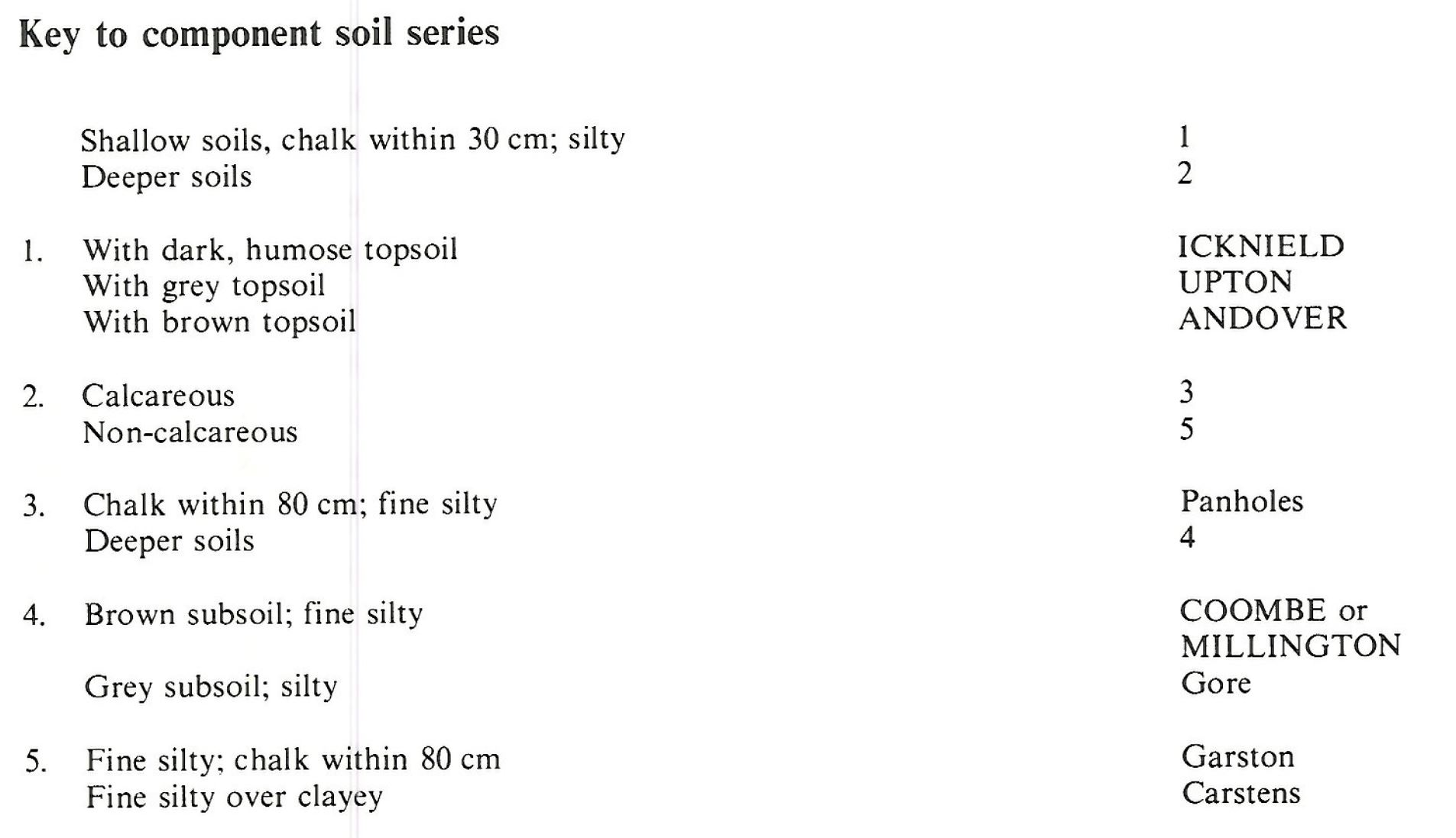 |
Northern Region
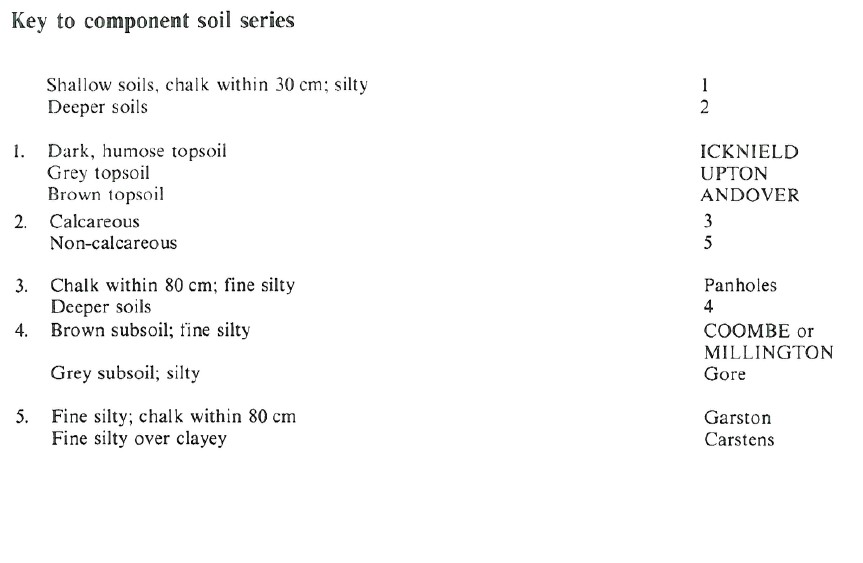 |
Typical Landscapes
South Western Region
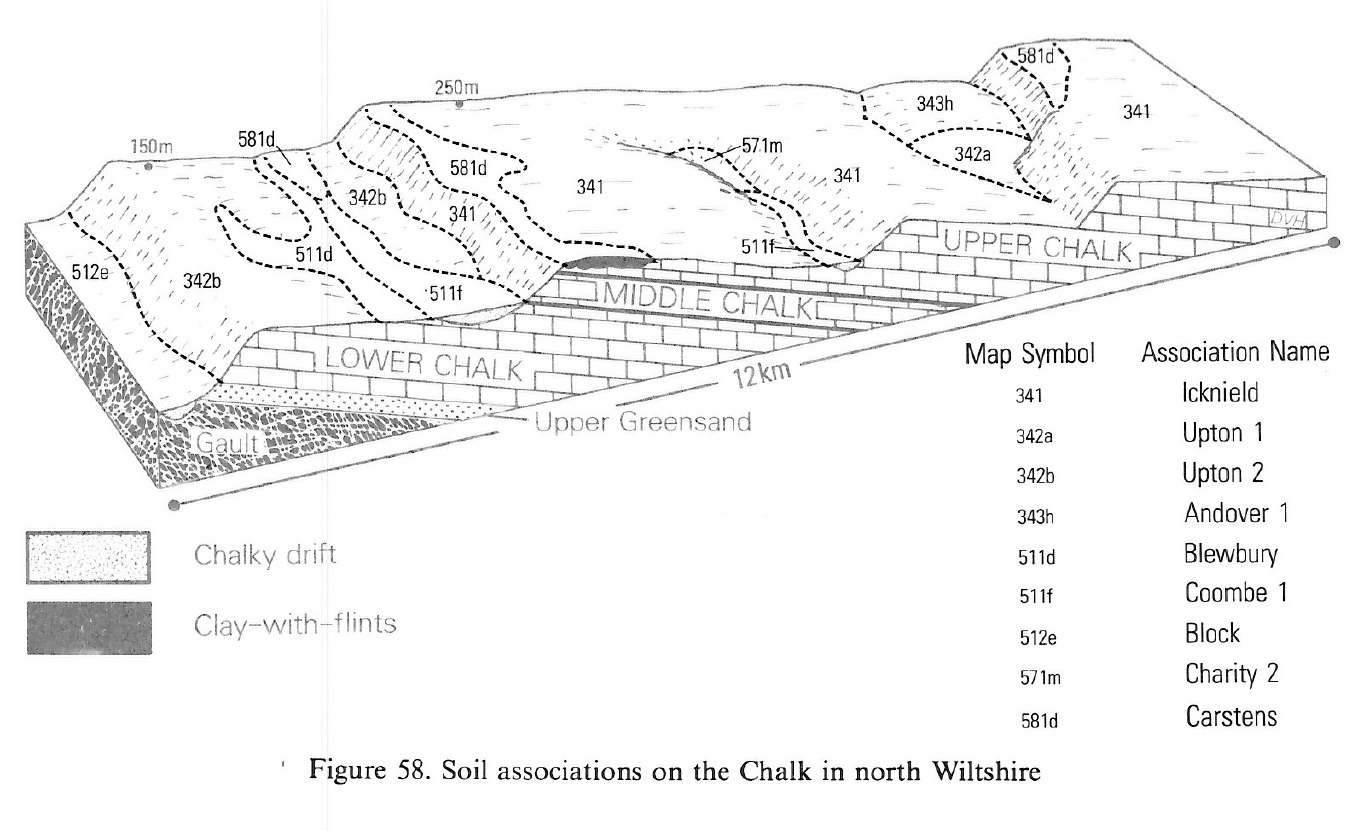 |
South Western Region
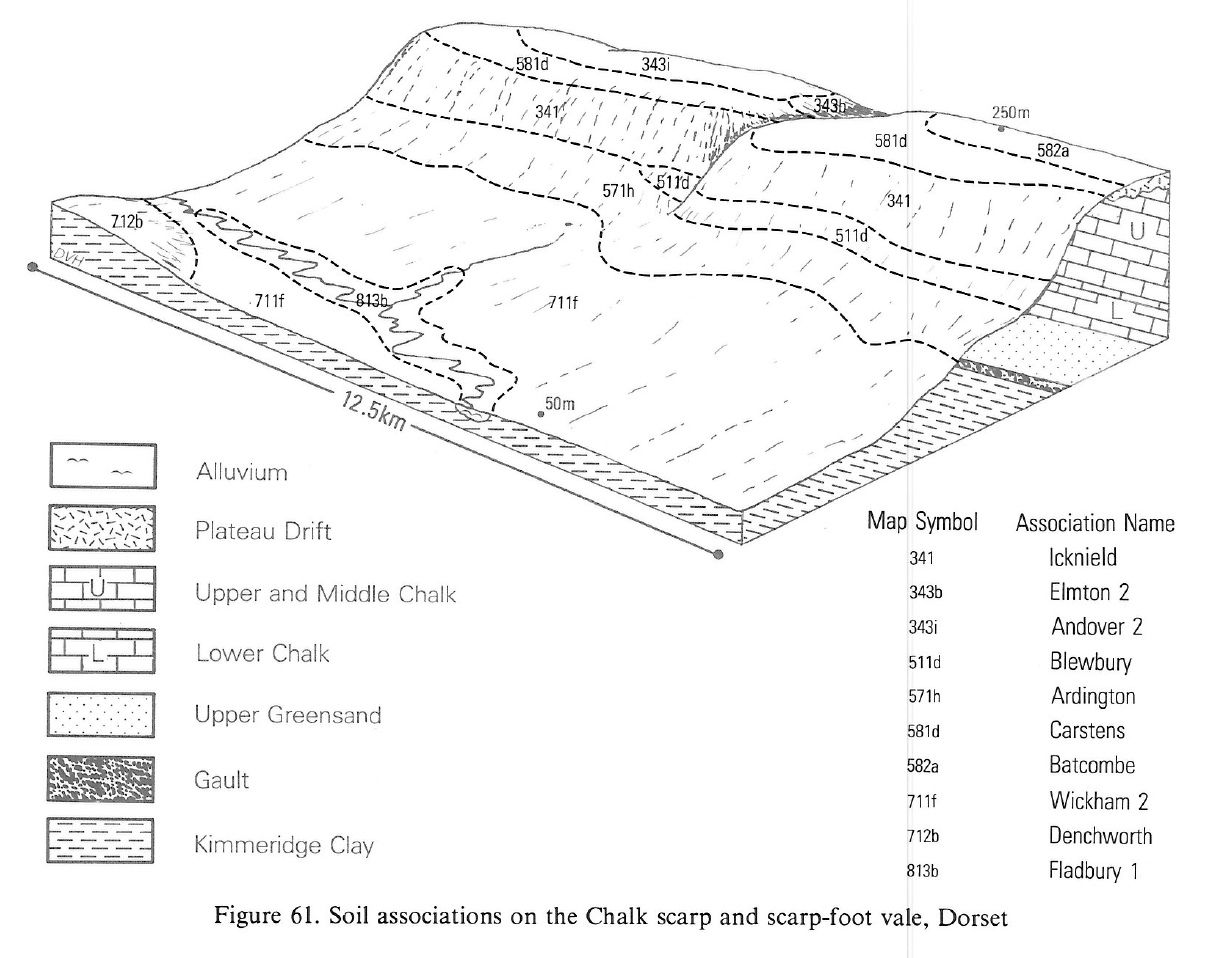 |
South Western Region
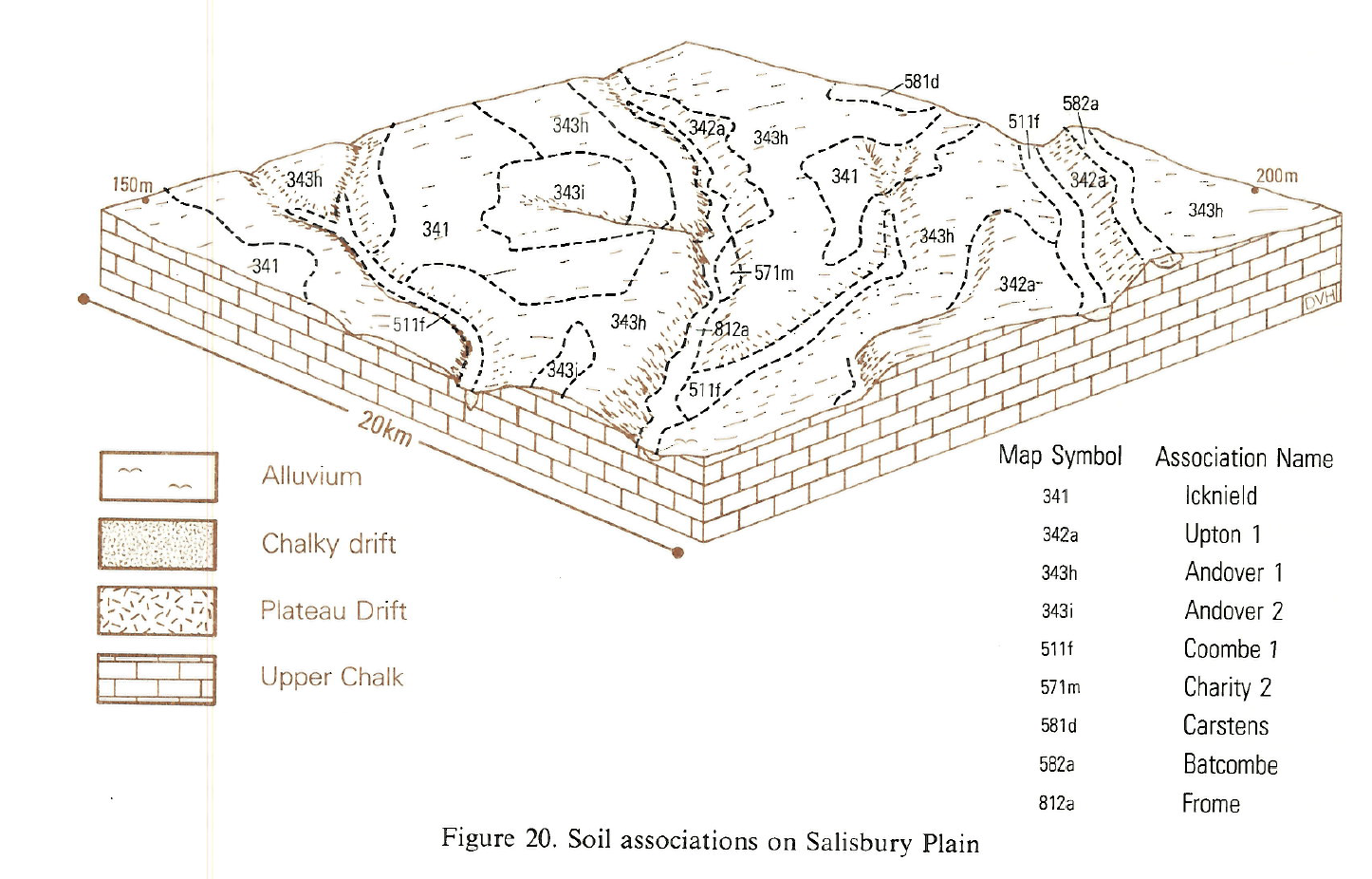 |
South Western Region
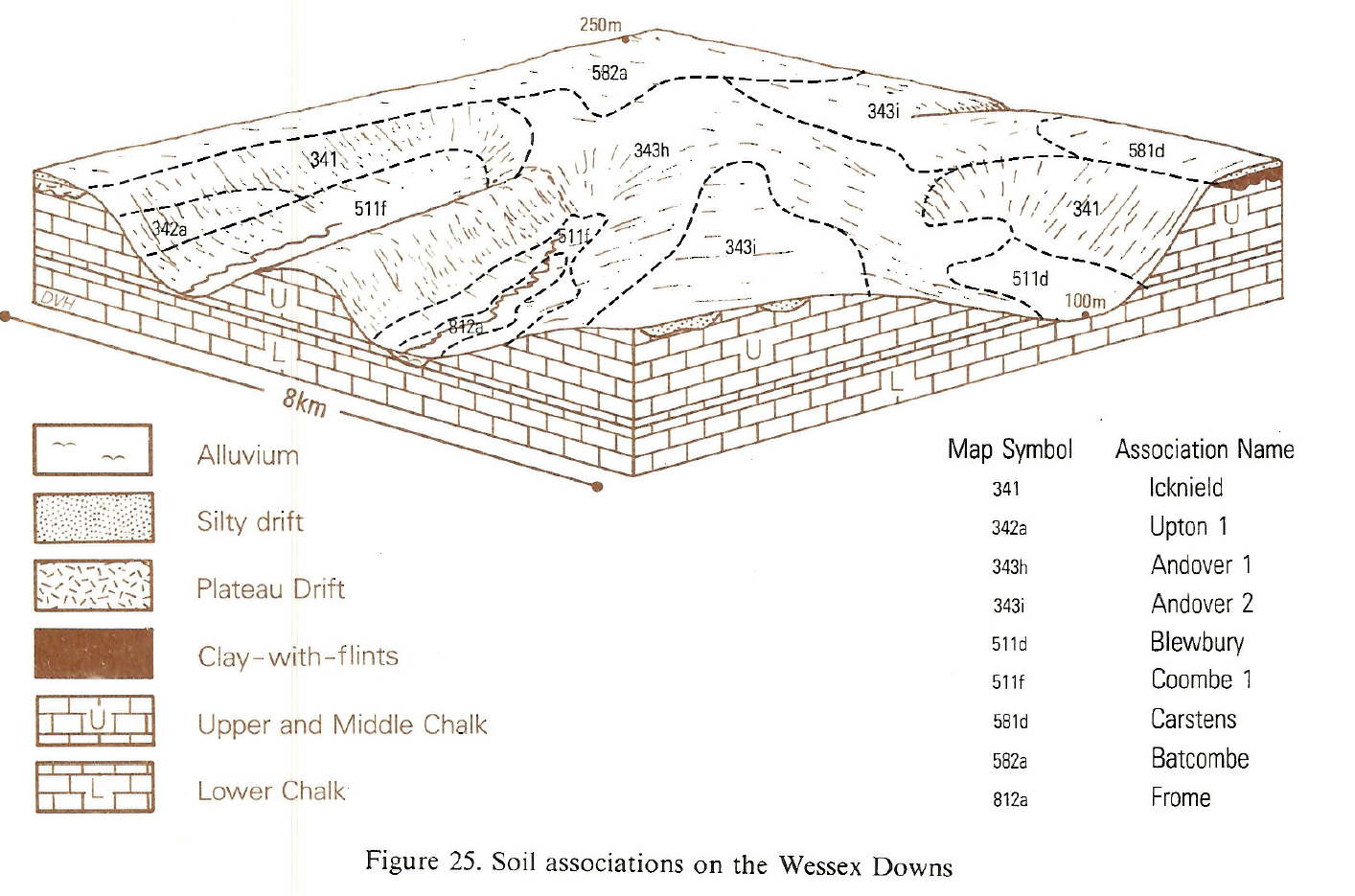 |
Northern Region
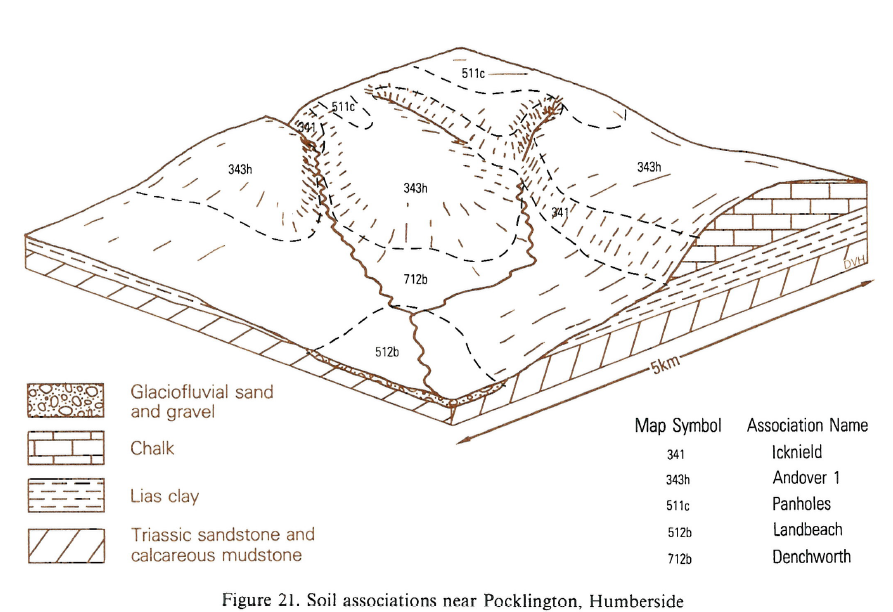 |
All information Copyright, Cranfield University © 2025
Citation: To use information from this web resource in your work, please cite this as follows:
Cranfield University 2025. The Soils Guide. Available: www.landis.org.uk. Cranfield University, UK. Last accessed 25/04/2025
